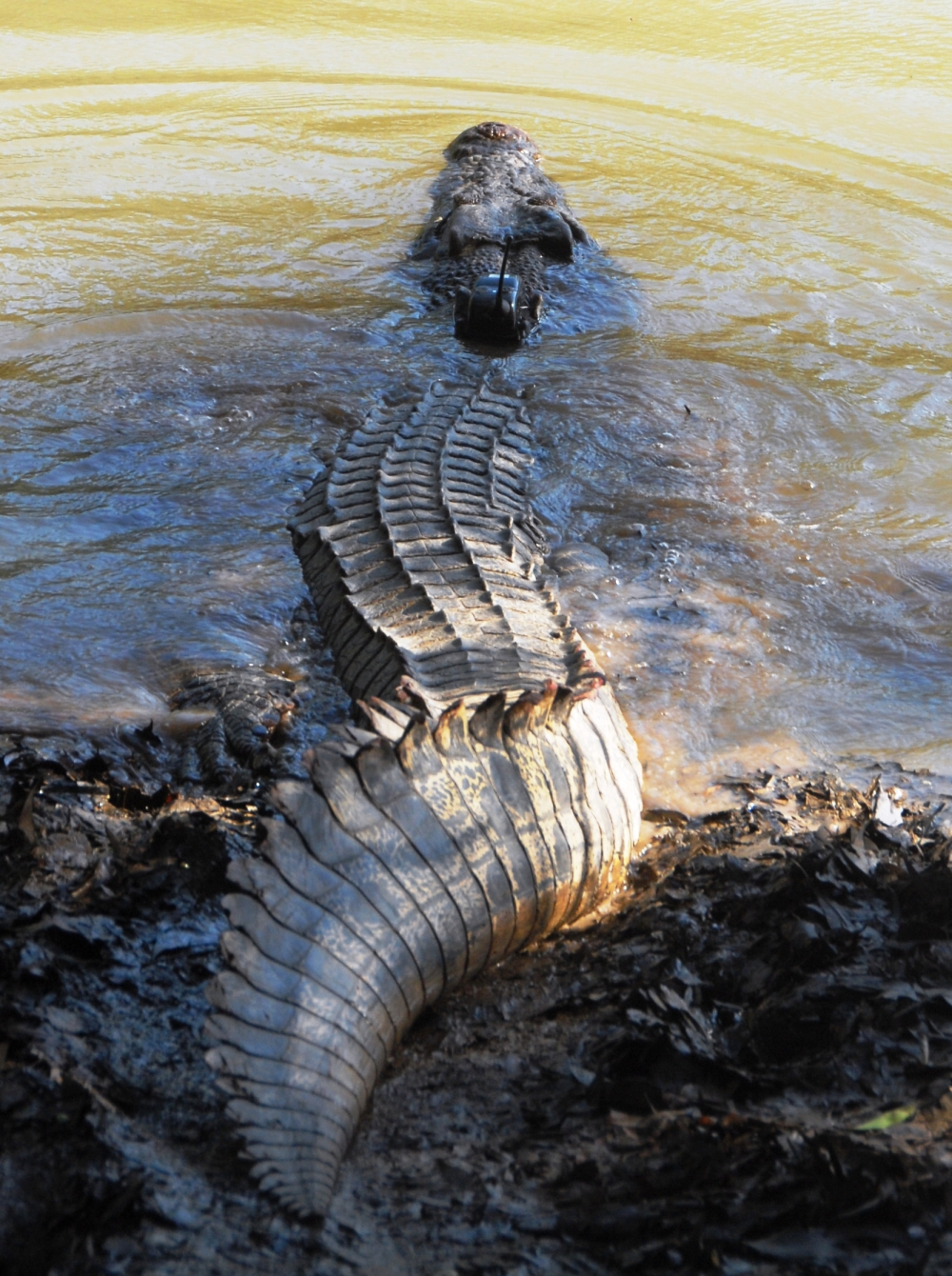The largest reptile alive on Earth today is the saltwater crocodile, Crocodylus porosus. Despite their enormous size, they’re not the best swimmers, which got scientists wondering how it was possible that they had been able to spread to so many islands in the South Pacific. Turns out, they love to surf.
The rest of this article is behind a paywall. Please sign in or subscribe to access the full content.
A study published back in 2010 was the first to break the news after it strapped sonar transmitters to 27 adult crocodiles in Australia’s Kennedy River and used underwater receivers to track their movements over 12 months. By the end of the study, they had 1.2 million data points on their fleet of saltwater crocs, and it revealed some intriguing insights as to how they get around.
For a croc, it seems “surf’s up” is within an hour of the tide changing, as this was the window during which they would begin long-distance travel. Doing so meant they could essentially surf ocean currents, and when the tide died down again, they’d haul themselves onto a riverbank and wait for the tide to change.
Their adventures took them vast distances, regularly traveling over 50 kilometers (31 miles) from their home to the river mouth and even out into the open sea. Such trips were completed in bursts of 10-kilometer (6.2-mile) stretches while the surf was good.

You going in?
Image credit: Australia Zoo
The results were then compared to crocodiles that had been tracked during ocean travel, revealing that this surfing behavior applied to their movements out in the open sea, too. At last, an explanation as to how these versatile giants – who aren’t the best swimmers – have been so successful in occupying many South Pacific islands.
“The estuarine crocodile occurs as island populations throughout the Indian and Pacific ocean, and because they are the only species of salt-water living crocodile to exist across this vast area, regular mixing between the island populations probably occurs,” said study author Dr Hamish Campbell from University of Queensland, in a release. “Because these crocodiles are poor swimmers, it is unlikely that they swim across vast tracts of ocean. But they can survive for long periods in salt-water without eating or drinking, so by only travelling when surface currents are favourable, they would be able to move long distances by sea.”
“This not only helps to explains how estuarine crocodiles move between oceanic islands, but also contributes to the theory that crocodilians have crossed major marine barriers during their evolutionary past.”
Among the most impressive stats logged was a 3.84-meter (12.6-foot) male who left the Kennedy River and went on a 590-kilometer (366.6-mile) mission to the west coast of Cape York Peninsula in 25 days by capitalizing on a seasonal current system that develops in the gulf of Carpentaria. There was also a 4.84-meter (15.9-foot) male that travelled 411 kilometers (255.4 miles) in just 20 days by waiting for the Torres Straits’ notoriously strong water currents to change direction in its favor.
Clever boys.
Source Link: Surf’s Up! Deadly Saltwater Crocodiles Compensate For Lousy Swimming By Surfing Between Islands